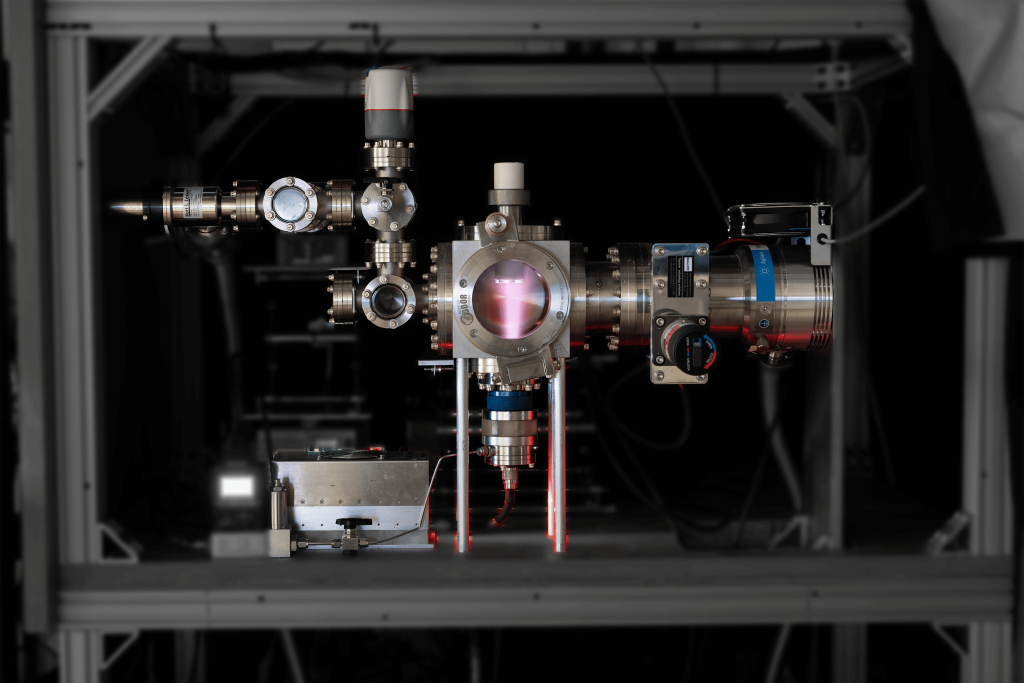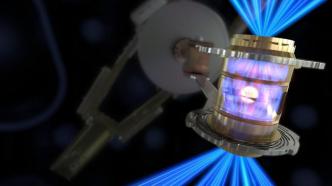
The current Thunderbird reactor has a very low energy conversion efficiency, with only about one billionth of a watt (1x10⁻⁹ W) of fusion energy produced for every 15 watts of electrical energy input.
Ever since humanity realized that the sun's energy comes from nuclear fusion, reproducing this ultimate energy process on Earth has been the dream of generations of scientists. Success would provide us with nearly unlimited clean energy. However, forcing two atomic nuclei to overcome the immense electrostatic repulsion and fuse together requires extreme high temperatures and pressures, often consuming more energy than it generates.
One approach to overcoming this problem is to increase fuel density, thereby increasing the probability of particle collisions and fusion during the fusion process. On August 20, Nature published the latest research findings from Curtis Berlinguette's team at the University of British Columbia in Canada. They designed a particle reaction device called the "Thunderbird Reactor," which uses electrochemical methods to increase fuel density and significantly boost the rate of deuterium fusion. While this discovery hasn't yet resolved the energy gain issue, the fundamental breakthrough it demonstrates could pave the way for low-energy nuclear reaction research and even future fusion technology.

The Thunderbird reactor at the University of British Columbia (UBC). Image courtesy of the author.
Nuclear fusion, as the name suggests, is the process of combining two lighter atomic nuclei to form a heavier nucleus, releasing enormous amounts of energy. Scientists primarily study the fusion reactions of deuterium and tritium because they can occur under relatively mild conditions—requiring temperatures exceeding hundreds of millions of degrees Celsius to transform matter into a plasma state. This requires powerful magnetic fields or lasers to confine the nuclei within a confined space and maintain a high enough density to ensure sufficient collisions.
This research eschews conventional approaches of creating stronger magnetic fields or higher temperatures, opting instead for creating extremely high local fuel densities within solid materials. In the Thunderbird reactor, a beam of deuterium ions, like a bullet, bombards a target made of metallic palladium. As the deuterium ions strike the palladium target, some fuse with adsorbed deuterium atoms within the target, trapping a significant number of them within the palladium lattice.
Over time, the deuterium concentration inside the palladium target increases, forming a high-density "fuel reservoir." This increases the probability that subsequently injected deuterium ions will collide with previously implanted deuterium, causing the rate of the fusion reaction to continue to rise until it reaches a saturated stable state.
The researchers then used the palladium target as an electrode in an electrochemical cell. When the cell was activated, the electrochemical reaction drove more deuterium atoms from the solution into the palladium target, further forcing more "fuel" into the already crowded palladium lattice, pushing the local deuterium density beyond the limit achievable by ion beams alone. Experimental results showed that once the electrochemical device was activated, the deuterium fusion rate increased by an average of 15% compared to its original value.
This work demonstrates that controlled, low-energy electrochemical methods can improve nuclear fusion efficiency, but commercial fusion power generation is still a long way off. The research team noted that the energy conversion efficiency of the current Thunderbird reactor is still very low, with only about one billionth of a watt (1x10⁻⁹ W) of fusion energy output generated for every 15 watts of electrical input.
"Nevertheless, using electrochemical methods to increase the rate of nuclear fusion is a significant achievement." In a commentary published in the same issue of Nature, Amy McKeown-Green and Jennifer Dionne said that this work "uses technical advances spanning nuclear physics, chemistry and materials science, and the authors are paving the way for broader research on driving low-energy nuclear fusion using accessible tabletop nuclear reactors."
References:


qtyyvewxferxrvggzmdlfhupophmxv